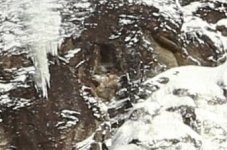M.Brian
Greenie
In the dawn of Connecticut’s history a story emerged of a pirate setting up camp in Windsor for a brief period of time. David Marteen was his name and he had just experienced an incredible streak of good fortune. Successfully plundering a number of unsuspecting cities in Spanish controlled territories, Marteen has amassed quite the collection of riches. His fortune got even better when Marteen intercepted a Spanish galleon named “the Neptune”. The Neptune was carrying 20 million dollars worth of gold (approximately 300,000,000 today.) Marteen overtook the exceptionally slow sailing Neptune and killed the officers on board. With 20 million in stolen Spanish gold marteen was riddeled with paranoia, and desperately in need to find a safe hiding place for his newly acquired loot. The story goes that Marteen sailed up the coast of the colonies and encountered a storm off the coast of New Jersey. Taking shelter from the storm in the Long Island sound, Marteen found the Connecticut river. In favorable winds he sailed up to Windsor and buried his treasure inland in what is now known as East Granby. (As you all know) (at least that’s what I’ve gathered, please correct me if I am wrong)
I hadn’t heard of this until recently and haven’t stopped thinking of it since. Imagining these buccaneers on the banks of the same river I grew up crossing is enchanting. The story of how he even happened upon the ct river itself is interesting. And a good place to hide your loot from other pirates it seems indeed. Until recently I would never of thought stories of pirate lore could have made it this far north. Does anyone have any recommendations on where to start digging up some information pertaining to this legend? What ever happened to the guy Ruches who claimed to have found the stones carved by Caldwell? Does anyone know the approximate location of where these stones were found? And what areas have extensive searches already taken place? has anything from these ships ever been recovered?
I know not many people are going to want to share years of their hard work, but if you’ve hit a dead end maybe some fresh eyes and new state of mind can bring the study back to life. If you’ve been studying this case I’d love to hear any information that you’re willing to share. Would even consider signing a document to ensure you’re entitled to a reward for sharing information if anything were to be found.
I am looking for information on the history of the search for this gold. I agree that the most fun part of this entire thing is doing the research yourself, pouring over old maps and theorizing about what may have been. I’m asking if any of the veterans on this site could point me in the right direction. I read that there is documents in the Boston library pertaining to Marteen. I was going to start with the Windsor historical society.
I grew up in the area of the story’s mentioned “old Newgate prison”, which ironically was a drinking hangout in high school. The prison has long been a Museum which is seemingly never open. The prison held Torres during the revolutionary war and seemed like an absolutely miserable place to be held. The jail cells were underground in an old copper mine, very damp and cold place. In high school we would sit on the back wall and overlook the valley below. Always with a mysterious sense of history in the air. Little did I know a legend of buried pirates treasure was only a stones throw away.
Any information or stories of people’s searches in the past, rumors, hearsay etc would be exciting. At this point I just want to learn as much as I can on the subject, and most importantly the history of the search for his treasure, given that it occurred practically in my backyard. The finding of the stones with the markings on them is fascinating. Does anyone know what happened the man who found them? Where they ended up etc?
Thanks in advance, hope I didn’t ramble too much.
Let’s work together and uncover history not just for us but for the history of the state of Connecticut.
I hadn’t heard of this until recently and haven’t stopped thinking of it since. Imagining these buccaneers on the banks of the same river I grew up crossing is enchanting. The story of how he even happened upon the ct river itself is interesting. And a good place to hide your loot from other pirates it seems indeed. Until recently I would never of thought stories of pirate lore could have made it this far north. Does anyone have any recommendations on where to start digging up some information pertaining to this legend? What ever happened to the guy Ruches who claimed to have found the stones carved by Caldwell? Does anyone know the approximate location of where these stones were found? And what areas have extensive searches already taken place? has anything from these ships ever been recovered?
I know not many people are going to want to share years of their hard work, but if you’ve hit a dead end maybe some fresh eyes and new state of mind can bring the study back to life. If you’ve been studying this case I’d love to hear any information that you’re willing to share. Would even consider signing a document to ensure you’re entitled to a reward for sharing information if anything were to be found.
I am looking for information on the history of the search for this gold. I agree that the most fun part of this entire thing is doing the research yourself, pouring over old maps and theorizing about what may have been. I’m asking if any of the veterans on this site could point me in the right direction. I read that there is documents in the Boston library pertaining to Marteen. I was going to start with the Windsor historical society.
I grew up in the area of the story’s mentioned “old Newgate prison”, which ironically was a drinking hangout in high school. The prison has long been a Museum which is seemingly never open. The prison held Torres during the revolutionary war and seemed like an absolutely miserable place to be held. The jail cells were underground in an old copper mine, very damp and cold place. In high school we would sit on the back wall and overlook the valley below. Always with a mysterious sense of history in the air. Little did I know a legend of buried pirates treasure was only a stones throw away.
Any information or stories of people’s searches in the past, rumors, hearsay etc would be exciting. At this point I just want to learn as much as I can on the subject, and most importantly the history of the search for his treasure, given that it occurred practically in my backyard. The finding of the stones with the markings on them is fascinating. Does anyone know what happened the man who found them? Where they ended up etc?
Thanks in advance, hope I didn’t ramble too much.
Let’s work together and uncover history not just for us but for the history of the state of Connecticut.







